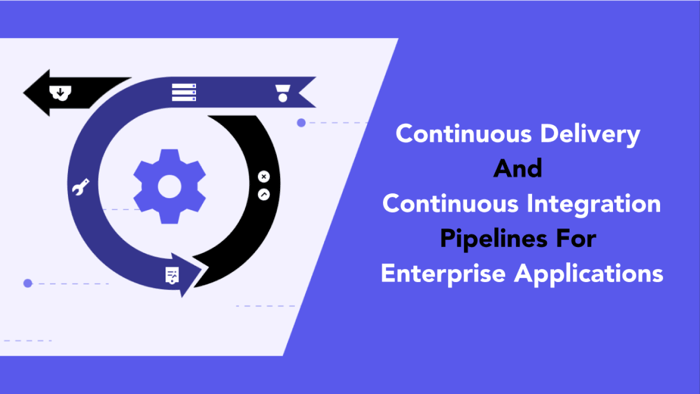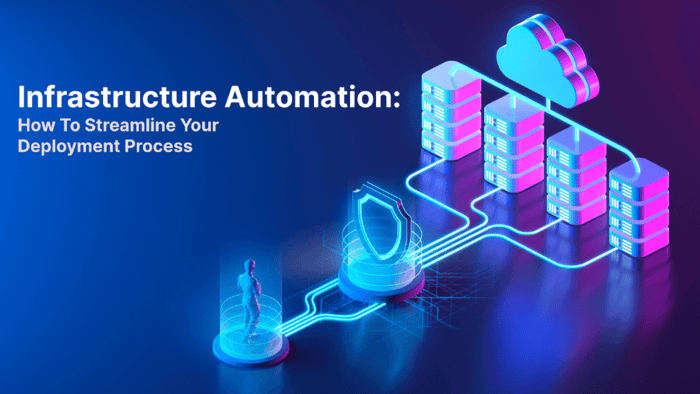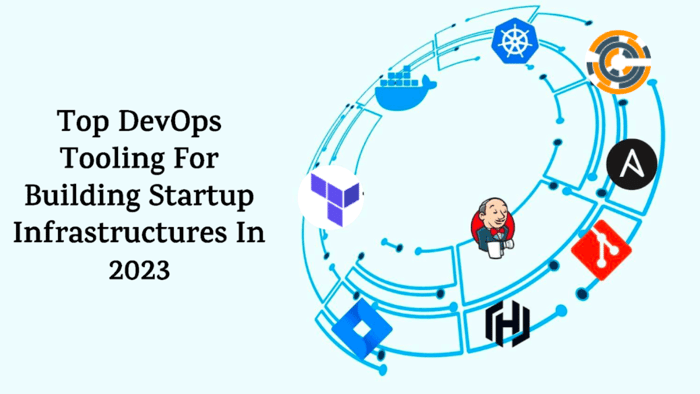Learn how to leverage CI/CD and take your enterprise applications to the next level.
Are you tired of the endless manual testing, deployment delays, and unreliable software releases in enterprise applications? It's time to embrace Continuous Integration (CI) and Continuous Delivery (CD) pipelines. In today's fast-paced digital world, where customer expectations are constantly evolving, organizations need to deliver high-quality software rapidly. CI/CD pipelines automate the build, test, and deployment processes, ensuring faster time-to-market and improved reliability.
Why are CI/CD pipelines particularly important for enterprise applications? Enterprise software is often large-scale, involving multiple teams working on different components simultaneously. Coordinating and integrating these components can be daunting. CI/CD pipelines streamline this by automating the software delivery process. Developers focus on coding while pipelines handle changes, tests, and deployments.
In this article, we explore CI/CD pipelines for enterprise apps, covering key components, benefits, and best practices. We address specific enterprise challenges and strategies for success. By the end, you'll grasp how CI/CD pipelines revolutionize software delivery in enterprises. Let's dive in and unlock the potential of continuous integration and delivery for your organization!
Introduction to CI/CD Pipelines
Continuous Integration (CI) and Continuous Delivery (CD) stand as pivotal practices in modern software development, aiming to streamline the delivery of top-tier software applications. CI involves frequent integration of code changes from diverse developers into a shared repository. This practice serves the purpose of early conflict identification and resolution, ensuring that the software maintains its operational status at all times. Through the automation of the build, test, and deployment processes, CI diminishes the risk of introducing bugs and empowers developers to efficiently roll out new features.
Extending the capabilities of CI, Continuous Delivery (CD) enters the scene by automating the release process, allowing teams to swiftly and reliably deploy code changes to production environments. The core principle is to keep the application perpetually in a state that is ready for release, thereby fostering collaboration between development and operations teams.

Implementing Continuous Delivery and Continuous Integration pipelines for enterprise applications offers significant benefits, including:
- Faster Time-to-Market: CI/CD allows organizations to release new features and updates rapidly, reducing the time it takes to deliver value to customers.
- Improved Quality: The automated testing and deployment processes in CI/CD pipelines help catch bugs and issues early on, resulting in higher-quality software.
- Increased Collaboration: CI/CD fosters collaboration between development and operations teams, promoting a culture of continuous improvement and shared responsibility.
- Risk Reduction: By automating processes and implementing rigorous testing, CI/CD minimizes the risk associated with manual errors during deployment.
In a standard CI/CD pipeline, several interdependent components operate in harmony. These integral elements encompass version control systems (such as Git), build servers (e.g., Jenkins), artifact repositories (like Nexus), automated testing frameworks (such as Selenium), containerization technologies (e.g., Docker), orchestration tools (e.g., Kubernetes), and monitoring solutions (like Prometheus).
By efficiently harnessing the capabilities of these components, organizations can establish streamlined CI/CD pipelines that elevate software delivery and drive business achievements.
Understanding Continuous Integration (CI)
Continuous Integration (CI) forms the bedrock of modern software development, emphasizing the frequent and automatic integration of code changes into a shared repository. The goal? Early detection and resolution of integration issues, paving the way for more efficient workflows and elevated software quality.
To construct an efficient CI pipeline, we delve into critical components:
- Infrastructure as Code (IaC): This practice treats infrastructure provisioning as code, permitting developers to manage resources via machine-readable definition files. The benefits are significant: consistency across environments, reproducibility in various settings, and the automatic scalability of resources.
- Containerization: This involves encapsulating an application and its dependencies into lightweight, portable containers. Containers offer isolation, portability, and efficiency, making them invaluable in a CI pipeline.
- Staging Design: A well-structured CI pipeline consists of stages mirroring software development steps. These stages typically include building, testing, conducting static code analysis, and publishing artifacts. Effective orchestration of these stages automates the integration process.
Automation, a cornerstone of CI pipelines, introduces possibilities:
- Feature Toggles for Controlled Releases: Feature toggles, or feature flags, allow developers to enable or disable specific application features. Incorporating them into the CI pipeline facilitates controlled feature releases, enabling quick rollbacks in case of issues during testing or deployment.
- Automating Build, Test, and Deployment: Feature toggles can automate various CI pipeline stages. For instance, developers can trigger builds, tests, and deployments for specific features or modules, ensuring efficiency and stability.
Leveraging automation and feature toggles streamlines workflows, minimizes manual intervention, and fosters cooperation between development and operations teams. Various CI tools and frameworks, like Jenkins, CircleCI, and GitLab CI/CD, support these automation possibilities. Following best practices, such as modular architecture, comprehensive testing, and clear version control guidelines, ensures successful CI implementation in enterprise applications.
Understanding Continuous Delivery (CD)
Continuous Delivery (CD) takes center stage as a practice dedicated to swift and dependable software deployment. Building upon the foundations of Continuous Integration (CI), CD extends its reach to encompass the deployment and delivery phases of the software development lifecycle.
Realizing engineering excellence within CD pipelines encompasses a strategic blend of practices, including:
- Infrastructure as Code (IaC): Encompassing infrastructure changes as an integral part of the CD pipeline ushers in consistent and reproducible deployments. Infrastructure is elegantly defined in code, rendering it manageable and amenable to version control.
- Automated Testing: Weaving testing and quality assurance processes seamlessly into CD pipelines ensures that each code alteration undergoes rigorous scrutiny before deployment. Automated tests span a gamut of facets, including unit tests, integration tests, performance tests, security scans, and more.
- Blue-Green Deployments: The concept of Blue-Green deployments involves maintaining two identical environments—one active (green) and one inactive (blue). This strategy ensures seamless rollbacks in case of deployment hiccups, simply by transitioning between the active and inactive environments.
Continuous Delivery offers a multitude of benefits that pave the way for engineering efficiency and elevated software delivery, such as:
- Faster Time-to-Market: Through comprehensive automation of the software delivery process, spanning testing, packaging, and deployment, Continuous Delivery empowers organizations to release new features and updates at an accelerated pace. This agile approach significantly reduces time-to-market, enabling businesses to swiftly respond to market demands.
- Mitigated Risk: The heart of Continuous Delivery pulsates with automated testing throughout the development cycle, ensuring that any potential issues or bugs are swiftly identified. This vigilant approach diminishes the risk of deploying flawed code into production environments, bolstering the reliability of customer-facing applications.
- Fostered Collaboration: CD fosters collaboration among distinct teams within an organization, including developers, testers, operations, and business stakeholders. By aligning everyone towards the common goal of continuous delivery, teams function in harmonious synergy, consistently delivering high-quality software.
CI/CD Pipelines for Enterprise Applications
Implementing Continuous Delivery (CD) and Continuous Integration (CI) pipelines in enterprise applications comes with its own set of challenges. However, with the right strategies, these challenges can be overcome, leading to successful implementation.
Here, we identify and address the specific challenges that loom when ushering CI/CD pipelines into enterprise applications:
- Legacy Infrastructure: Enterprises often have complex and legacy infrastructure that may not be easily adaptable to modern CI/CD practices. This can hinder the smooth integration of CD and CI pipelines.
- Security and Compliance: Enterprises prioritize security and compliance, which can sometimes slow down the deployment process. Ensuring that CD and CI pipelines meet the required security standards and comply with industry regulations is crucial.
- Large-scale Deployments: Enterprise applications are typically large-scale with multiple components and dependencies. Coordinating the deployment of these applications across different environments can be challenging.
To navigate these challenges successfully, organizations can chart a course with the following strategies:
- Gradual Adoption: Instead of embarking on a radical overhaul of existing systems, organizations can embark on CI/CD implementation in more manageable segments. Initiating CI/CD pipelines in smaller projects or specific modules permits a gradual embrace of these transformative practices, minimizing disruption to established processes.
- Collaboration and Communication: The cornerstone of an effective CI/CD implementation lies in seamless collaboration among development teams, operational teams, and pertinent stakeholders. Consistent communication serves as a linchpin, unearthing potential bottlenecks, addressing concerns, and smoothing out the deployment landscape.
- Automated Testing: Embedding automated testing at various junctures within the CD pipeline serves as a robust bulwark against issues or bugs. By detecting and rectifying potential pitfalls early in the development cycle, automated testing fundamentally reduces the likelihood of deployment mishaps, upholding quality assurance standards.
Successful implementation of CI/CD pipelines in enterprise environments has been achieved by companies like Netflix, Amazon, and Google. These organizations have embraced DevOps practices, enabling them to deliver software more efficiently and effectively.
Conclusion
As we draw the curtains on this exploration of Continuous Integration and Continuous Delivery (CI/CD) pipelines in the context of enterprise applications, a tapestry of opportunities and advantages unfolds.
Let us pause to reflect on the advantages that CI/CD pipelines bring to the table for enterprise applications:
- Streamlined Efficiency: These pipelines orchestrate a software development symphony where every note is precisely timed. The result? A harmonious and efficient process that transforms code into valuable software.
- Swift Market Entry: With automation at the helm, the journey from conception to market-ready is a swift one. CI/CD's automated build, test, and deployment processes hasten the time to market, ensuring you stay ahead in the race.
- Elevated Quality: Continuous testing and unwavering quality assurance serve as the sentinels of software integrity. CI/CD ensures that every line of code is subjected to rigorous scrutiny, fostering high-quality software.
- Risk Mitigation: The judicious use of feature toggles instils an element of control and caution. Errors and bugs are tamed as controlled releases stand sentinel against unforeseen hiccups.
In CI/CD implementation, the choice of tools and frameworks forms a pivotal compass point. We extend an earnest invitation to organizations to not merely tread but embrace CI/CD practices. This embrace is a testament to your commitment to engineering efficiency and an enhanced software development lifecycle.
Dear readers, we now implore you to translate what you’ve learnt into action. The adoption of CI/CD pipelines is a voyage toward improved software delivery, heightened productivity, and, ultimately, triumphant success in the ever-evolving landscape of contemporary business. Your ship is ready to sail; the course is set. Bon voyage!
Akava would love to help your organization adapt, evolve and innovate your modernization initiatives. If you’re looking to discuss, strategize or implement any of these processes, reach out to [email protected] and reference this post.





